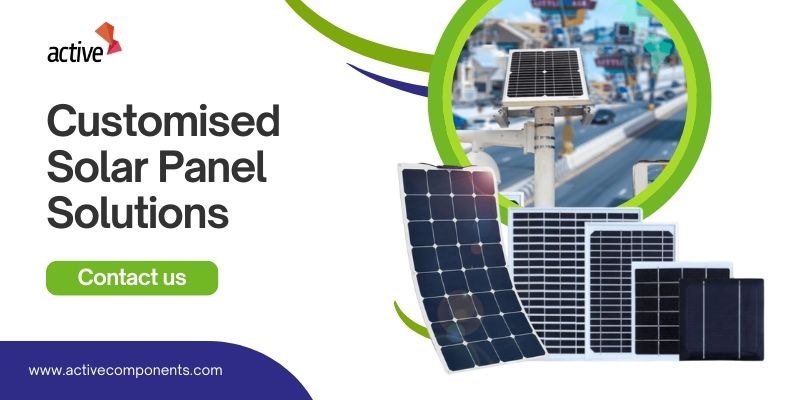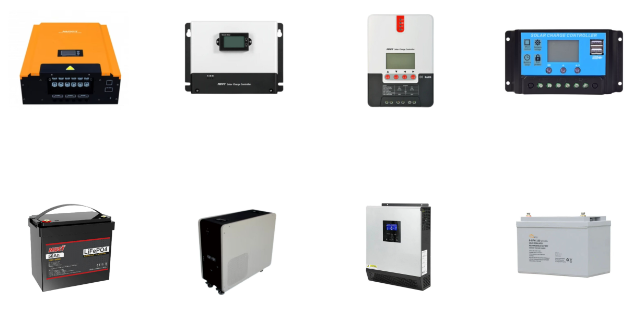
Key Considerations for Developing Sustainable Solar Products
Developing a solar product is a complex task requiring considering multiple factors carefully. From assessing energy needs to ensuring regulatory compliance, each decision has significant implications for the product's performance, sustainability, and market readiness.
This blog highlights the key factors in creating a solar product that meets technical standards and succeeds in a competitive market.
Technology Selection for Solar Products
Solar Panel Type
When designing a solar product, selecting the right solar technology is crucial. The type of solar panels you choose—whether monocrystalline, polycrystalline, or thin-film—will significantly impact your product's efficiency, cost, and overall performance. Each of these technologies has its strengths and is suited for different use cases and environments.
To make an informed decision, it's important to consider the shape, suitable use cases, and environmental conditions for each type of panel. Whether you need panels that perform well in shaded areas, can fit on unconventional surfaces, or meet specific budget requirements, the right choice will depend on your project needs.
For more detailed specifications and to ensure you're selecting the best option for your application, please refer to our product data sheets available for each technology.
Energy Needs
Understanding energy needs is the foundation of developing a solar product. This involves assessing power consumption, peak usage times, and potential fluctuations in demand. By calculating the total energy requirements, you can determine whether solar energy can fully or partially meet these needs.
Depending on your application, you may need an on-grid (partially solar-powered) solution or an off-grid (fully autonomous) solution:
- On-Grid (Partially Solar-Powered) Solutions: For applications with high or variable energy demands, an on-grid system may be more appropriate. In this setup, solar energy supplements the power supply, reducing reliance on the grid but not eliminating it. This approach offers the flexibility of accessing grid power during periods of low solar generation.
- Off-Grid (Fully Autonomous) Solutions: In remote locations or scenarios where complete independence from the grid is required, an off-grid system is ideal. These systems are designed to fully meet energy needs using solar power alone, often combined with robust energy storage solutions to ensure reliability even during extended periods of low sunlight.
Solar Autonomy Level
The Autonomy Level is crucial for off-grid applications, where a reliable power supply isn't just convenient—it's essential. Start by determining whether the solar product needs to function continuously or if it will only be required during daylight hours. Products that need to operate continuously, like solar-powered security systems or off-grid lighting solutions, require a more resilient design approach. In such cases, the product must be equipped with adequate energy storage solutions, like high-capacity batteries, to ensure uninterrupted performance even when sunlight is not available.

The choice of energy storage is integral to achieving high autonomy. It’s not just about selecting the right battery but also about optimising how energy is stored and managed. Lithium-ion batteries, for example, are popular due to their high energy density and long cycle life. However, the selection should be based on the specific needs of your product, including the expected energy consumption, charging cycles, and environmental conditions. Advanced energy management systems can help in maximising storage efficiency, ensuring that the stored energy is utilized effectively when solar input is low or absent.
- Designing for High Autonomy
To design a product with high autonomy, it’s essential to consider both the energy generation and consumption aspects. Integrating smart energy management systems that can adjust the load based on available energy can significantly enhance the autonomy of the product. Moreover, incorporating features like energy-efficient components, low-power modes, and real-time monitoring can further optimise the system’s performance, making it more resilient and user-friendly.
Components Integration for Solar Products
When designing a solar product, one of the key aspects to consider is the seamless integration of essential components, including solar cells, batteries, and other necessary elements, into the product's structure.

Solar Cells: Selecting and Positioning
The type and quality of solar cells you choose will significantly impact the product's energy generation capabilities. High-efficiency solar cells are ideal, especially if space is limited, as they generate more power per unit area. Additionally, consider the placement and orientation of these cells within the product. For instance, if designing a portable solar charger, the solar cells should be positioned to capture maximum sunlight, regardless of how the product is being used or carried.
Battery Integration: Storage and Management
Batteries play a pivotal role in solar products by storing the energy generated by solar cells for later use. When integrating batteries, consider the size, weight, and capacity required for your product’s intended use. It’s also essential to incorporate a battery management system (BMS) that ensures safe operation, prevents overcharging or deep discharging, and prolongs the battery's life. The placement of the battery within the product should be designed to balance the overall weight distribution and maintain the product’s usability.
Power Electronics: Enhancing Efficiency
Power electronics, such as inverters, charge controllers, and DC-DC converters, are vital for regulating the flow of electricity between the solar cells, batteries, and the end-user device.
These components must be carefully integrated to minimise energy loss and ensure consistent power output. Consider the heat dissipation needs of these electronics, as improper management can lead to overheating and reduced efficiency. Designing adequate cooling solutions, such as heat sinks or ventilation, can enhance the reliability and longevity of your solar product.
Structural Integration: Durability and Aesthetics
The physical integration of components should prioritise both functionality and the product's durability and aesthetics. The housing should protect sensitive components from environmental factors like moisture, dust, and impact while maintaining the product’s visual appeal. The design can facilitate easy assembly and disassembly for maintenance or recycling, enhancing the product’s sustainability.
At Active Components, we work with a reliable manufacturer to provide modular housing solutions, ensuring a complete and tailored solution for your application development.
Regulatory Compliance
Designing solar products goes beyond just the technical aspects; it also involves adhering to a complex set of regulations that ensure the product's safety, environmental responsibility, and market readiness.
Safety Standards: Meeting Industry Requirements
When choosing a solar solution supplier, one of the foremost considerations is ensuring that the product meets all relevant safety and electrical standards. These standards are put in place to protect users from electrical hazards, such as shocks, short circuits, and fire risks. Depending on the target market, your product may need to comply with different national or international safety standards, such as:
- IEC 62109: This international standard applies to the safety of power converters for use in photovoltaic systems, ensuring that the device is electrically safe to use.
- UL 1703: A standard in the United States, covering flat-plate photovoltaic modules and panels, which specifies the necessary safety requirements for installation and use.
- CE Marking: For products sold within the European Economic Area (EEA), CE marking is mandatory, indicating that the product complies with essential safety requirements.
Beyond meeting these standards, it's important to conduct thorough testing, such as electrical insulation tests, over-voltage protection, and temperature rise tests, to ensure your product is safe under all operating conditions.
Environmental Regulations: Responsible Design and Disposal
Environmental sustainability is a growing concern in the solar industry, and regulatory bodies have implemented various regulations to minimise the environmental impact of solar products. Compliance with environmental regulations involves several key aspects:
- Material Restrictions: Certain materials used in the manufacturing of solar products, such as lead, mercury, and cadmium, are restricted under regulations like the Restriction of Hazardous Substances (RoHS) Directive in the European Union. Ensuring that your product does not contain prohibited substances is essential to comply with these regulations and to avoid potential penalties or market restrictions.
- Waste Electrical and Electronic Equipment (WEEE) Directive: In the EU, the WEEE Directive mandates the proper disposal and recycling of electrical and electronic equipment, including solar components. Compliance with this directive requires designing products with end-of-life considerations, such as easy disassembly, recycling-friendly materials, and providing clear instructions for disposal.
- Energy Efficiency Standards: Some regions require solar products to meet specific energy efficiency standards, which not only help reduce energy consumption but also contribute to the product's overall sustainability.
Market-Specific Regulations: Tailoring Compliance to Your Audience
It's also important to recognise that regulatory requirements can vary significantly from one market to another. For instance, a solar product designed for use in the European market will need to comply with different standards than one intended for the North American or Pacific markets. As part of your regulatory compliance strategy, conduct a thorough review of the specific requirements in each target market, including:
- Labelling Requirements: Certain markets may have specific labelling requirements, such as energy efficiency labels, recycling symbols, or country-of-origin marks, that must be included on the product packaging or user manual.
- Import/Export Compliance: If you are manufacturing products in one country and exporting them to another, you must also comply with the relevant import/export regulations, including tariffs, trade agreements, and customs documentation.
Why Choose Active Components?
Active Components is a New Zealand-based company specialising in the electronics and electrical industry. We pride ourselves on delivering high-quality components and tailored solutions to meet our customers’ diverse needs. Our offerings include a wide range of custom solutions, from solar systems and cable assemblies to LCDs and antennas.
What sets us apart is our ability to provide a complete solution—from product modelling and sourcing electronic components to brand labelling—ensuring your project is executed seamlessly from start to finish. Whether you are looking to enhance your current product line or develop something entirely new, our team is here to support you with expertise and dedication.
Got a project you’d like to discuss? Visit our website and contact us today to explore how we can help bring your ideas to life.
